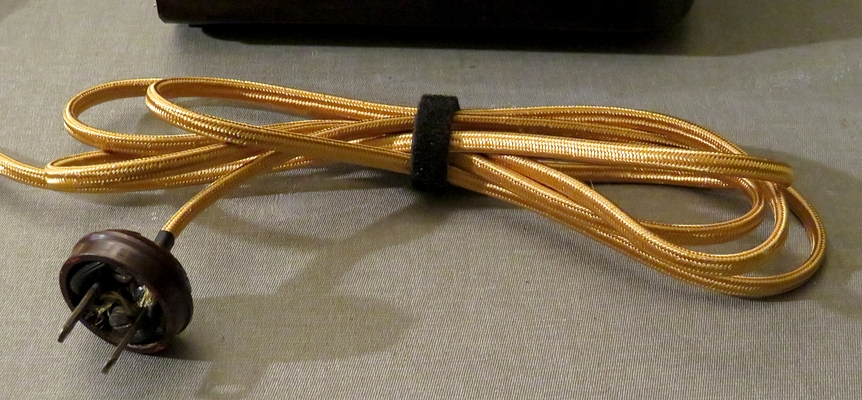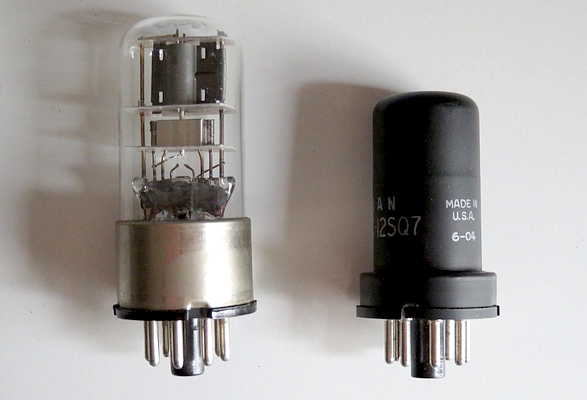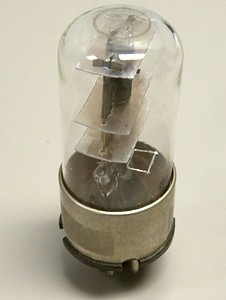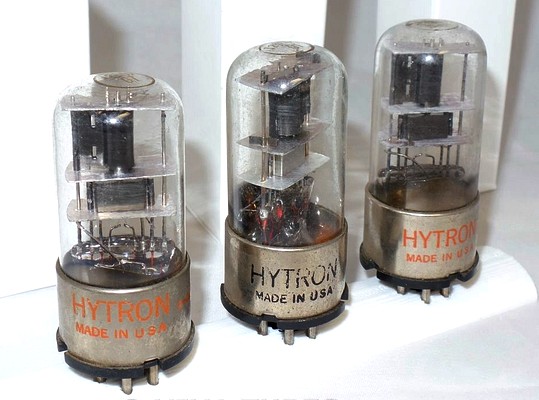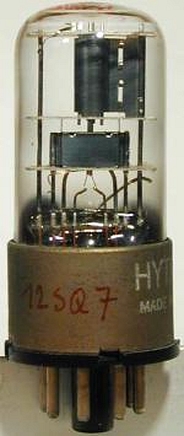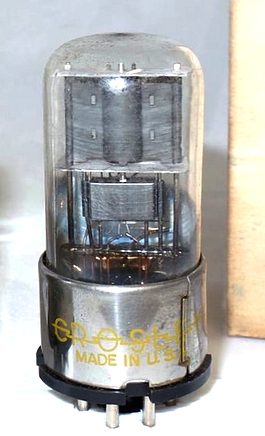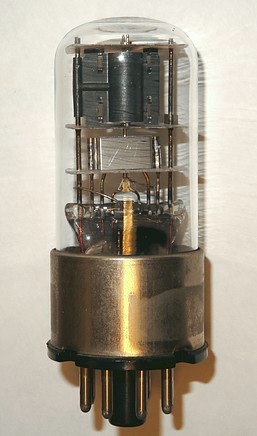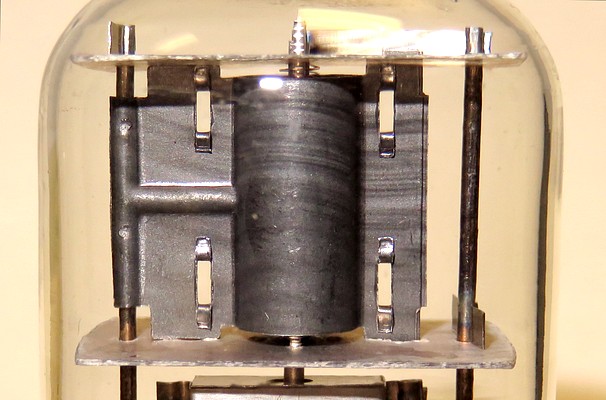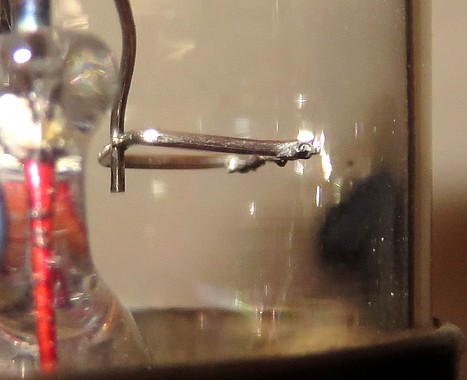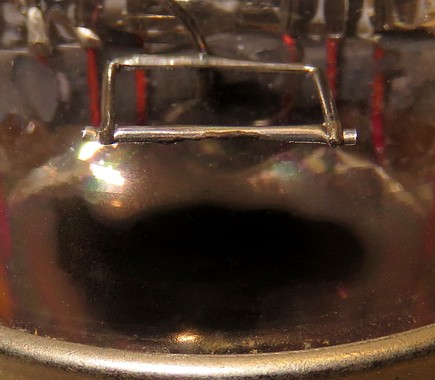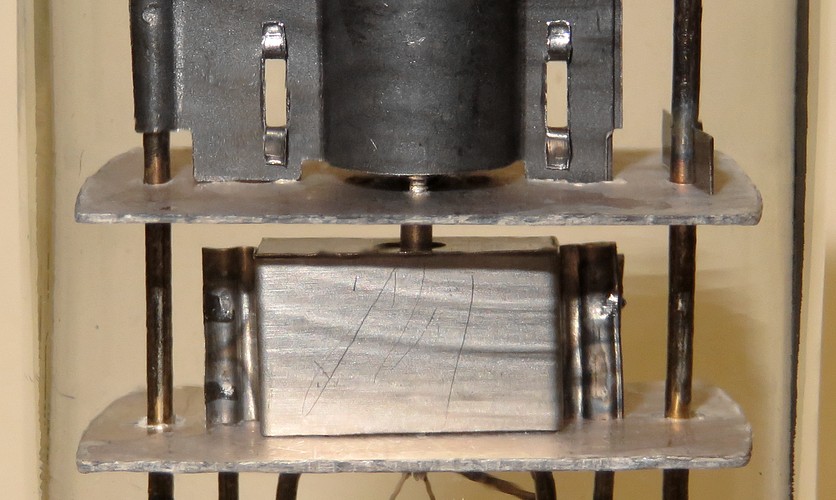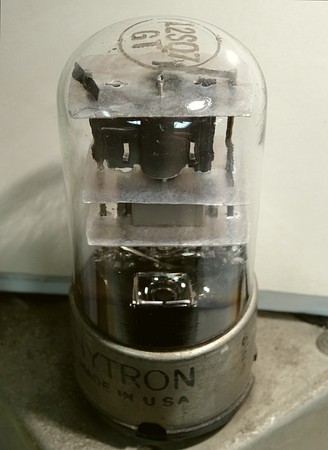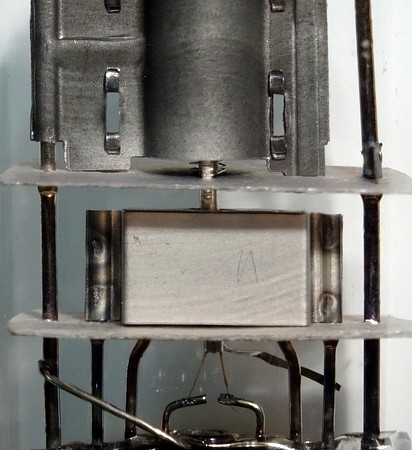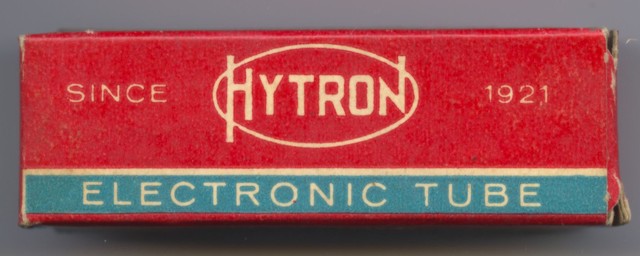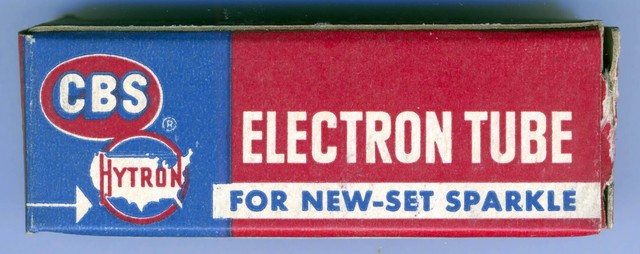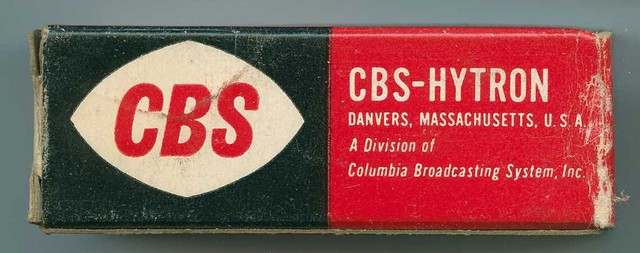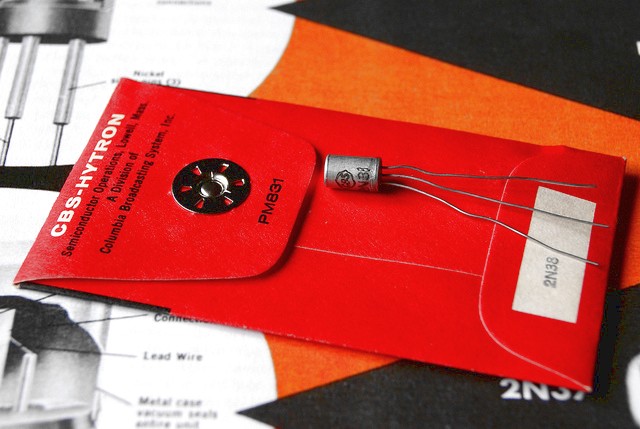 |
Emerson 330 |
 |
|
|
|
|
|
|
|
| I
almost forgot to show you the cord. Here it is. |
|
|
Do you like a good mystery?
|
|
|
One
tube needed to be replaced. On the left is the 12SQ7 glass
vacuum tube that was replaced with the metal tube on the
right. The 12SQ7 is three tubes in one, sort of an early
integrated circuit. It contains a triode and two diodes, and
is used to detect the radio signal, is the first stage of
audio amplification, and performs the Automatic Volume
Control function.
The triode tested about 25 out of a score of 1000 on the
tube tester. Both diodes are at death's door.
I don't understand how the radio was working, but it goes to
show you how robust these "All American Five" radios are.
(Some people say that 12SQ7s
often test bad and the only real way to test them is to
substitute them in a radio.)
Forthwith and henceforth, we shall call the glass 12SQ7 the
"Mystery Tube." It's a mystery who made it. |
|
|
| |
|
There
are no markings on the Mystery Tube, other than the
designation "12SQ7" in a circle on the top, and a
dull spot on the
base that looks like a paper label or piece of tape was once there.
Someone in the past probably cleaned it with a wet rag and
wiped the ink off the base. |
|
|
|
|
|
|
|
| Let's do
an Internet search of tube sellers, and look for a glass
12SQ7 in a silver metal base with "12SQ7" in a circle on
top. Here's a good candidate! Must be a HYTRON. Nope. Take a close look at the
tube elements. |
|
|
|
|
| The Hytrons only
have a half plate. Other tubes have a full plate. The "Mystery
Tube" on the right has 3/4 of a plate. |
|
| |
|
|
|
Whoever manufactured this tube chose to crimp the plates
together and then snip them so it wasn't necessary to slide
the unit down both supports. Instead, it is held in position
on the right by tabs going through the mica, and the
right-hand support is the electrical connection to the grid. The assembly of the various
elements appears to have been done by hand. |
|
|
| This
is what my search uncovered, looking only for glass 12SQ7s
with a silver base:
Air Chief –
full plate, number on side
Amperex – full
plate, number on side
Chancellor – ½ plate, number on side
Crosley – full plate, number on side
Emerson – ½ plate, number on side
Hytron – ½ plate, number on top or side
National Union – ½ plate, number on side
RCA – full plate, number on side
Silvertone – ½ plate
Sylvania – full plate, number on side
Tung-Sol – ½ plate
Zenith – full
plate, number on side, huge getter mirror
I also found Firestone, Phillips, Regency, Raytheon,
Tronal and Ward Phillips 12SQ7s but they have a different internal
structure, so they aren't the Mystery Tube manufacturer.
I could not find a single picture of a 12SQ7 with a 3/4 size
plate.
This is by no means an
all inclusive list, as there were once over 40 tube
manufacturers in the USA. It was also an Internet search, so
it only reflects what people choose to put on the Internet. |
|
|
|
|
|
|
| An
interesting observation is that when the getter in this tube
was flashed, it left a very small getter spot on the glass.
It must have been made with an extremely hard vacuum. Some tubes
have a "getter mirror" that covers half the tube. |
|
|
|
|
|
| The construction
is very crude by modern standards, but this 12SQ7 is an
electronic marvel. It's the handwork
of artisans in some forgotten factory, and a piece of radio history. |
|
|
|
The mystery solved! |
|
|
|
|
A 12SQ7 GT owned by Dwight Hill. A perfect match to the Mystery
Tube. It's a HYTRON after all! |
|
Dwight Hill of the
Southeastern Antique Radio Society went through his
stock of 12SQ7s and found this matching Hytron vacuum tube,
solving the mystery. Thanks Dwight!
Some info on the Hytron Company:
The Hytron company was founded around 1921 in Salem,
Massachusetts. Two brothers, Bruce and Lloyd Coffin, made
tubes by hand in the basement of their home. There's no way
to prove it, but they may have made these very tubes,
as they are obviously hand made!
The Hytron Company grew by 600% during World War II, and
merged with CBS in 1951. By the time the Coffin brothers
retired from active management in 1954, CBS-Hytron had five
factories and employed over 6000 workers.
On October 18 of that same year, the REGENCY TR-1 went on
sale. It was the first commercially produced transistor
radio. A year earlier, in 1953 Raytheon began selling the
CK722 transistor to hobbyists. In 1955 Philco made the first
all transistor car radio. Vacuum tube radios and those five
CBS-Hytron vacuum tube factories were soon to be a thing of
the past. After 29 years, the Coffin brothers must have
known when to call it quits. |
|
|
|
|
|
|
|
|
|
|
|
|
|
|
|
|
Tube box images by
Shaun Merrigan |
|
|
|
|
|
|
|
| CBS-Hytron entered the
semiconductor field in 1953 and manufactured Germanium
transistors till 1962. They also made color TV picture tubes
till 1961. After the company closed, CBS sold the Hytron
name to a tube house. Afterwards, a tube found in a generic
box simply labeled "Hytron" could have been made anywhere. |
|
|
|
|
|
|
| We now
conclude this broadcast. Tune in any time with our
non-existent app. |
|
